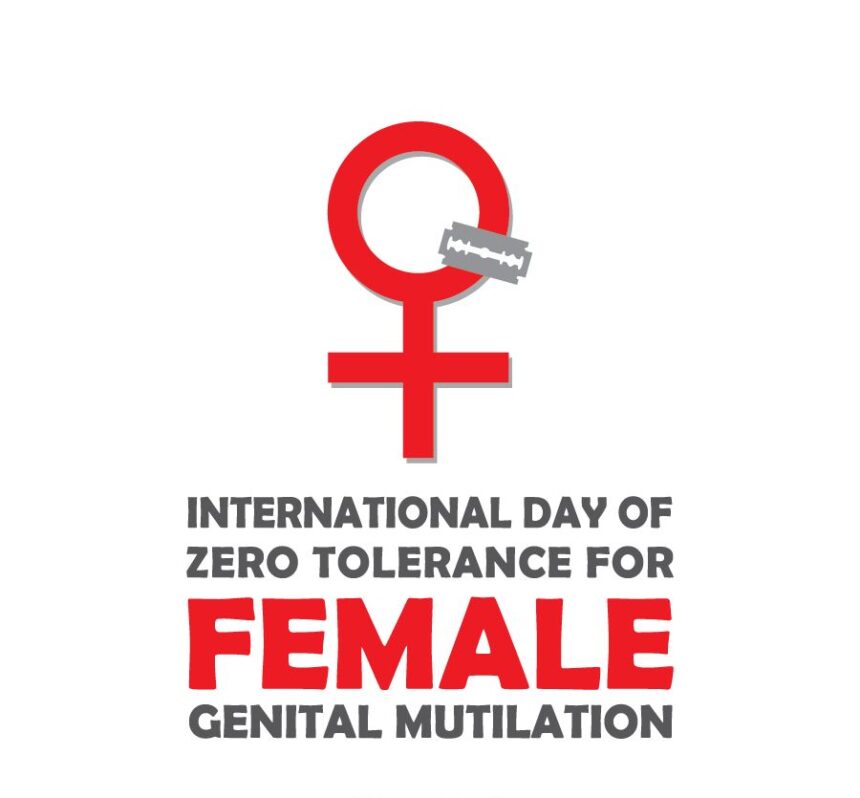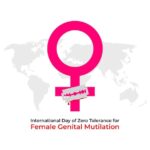🌍 Introduction: What is the International Day of Zero Tolerance for Female Genital Mutilation (FGM)?
Every year on February 6, the world observes the International Day of Zero Tolerance for Female Genital Mutilation (FGM) — a crucial reminder of the ongoing human rights violation that affects over 230 million girls and women worldwide. Initiated by the United Nations in 2012, this day serves as a global wake-up call to eradicate a practice rooted in gender inequality, cultural misunderstanding, and silence.
- 🌍 Introduction: What is the International Day of Zero Tolerance for Female Genital Mutilation (FGM)?
- 📜 History of the Day: Why It Was Established
- 📌 7 Shocking Facts About FGM You Should Know
- ❓ What is FGM? A Simple Explanation
- 🧠 Why is FGM Still Practiced? (Socio-Cultural Context)
- ⚕️ Health Impacts of FGM: A Life Full of Pain
- 🇮🇳 FGM in India: A Hidden Practice
- 📅 Timeline of Key Global & Indian Events
- 🌐 Significance of the Day
- 🎯 Why It Matters in Our Lives
- 🫶 Wishing & Acknowledging the Day
- 📌 Important Points for Students & UPSC Aspirants
- ✅ Conclusion: A Call to Conscience
- 💡 Did You Know?
Female Genital Mutilation is not just a medical issue — it’s a human rights emergency that violates a girl’s right to health, dignity, safety, and freedom.
📜 History of the Day: Why It Was Established
In 2012, the United Nations General Assembly officially designated February 6 as the International Day of Zero Tolerance for FGM.
The roots of the observance can be traced back to the efforts of African women activists, particularly from Senegal, who pushed to make FGM a globally recognized human rights issue.
The UN, WHO, and UNICEF joined hands to recognize FGM as a serious global threat, embedding it in Sustainable Development Goal (SDG) 5.3, which aims to eliminate all harmful practices against women and girls by 2030, including child marriage and FGM.
📌 7 Shocking Facts About FGM You Should Know
Over 230 million girls and women alive today have undergone FGM in 30 countries, primarily in Africa, the Middle East, and Asia.
Every year, 4 million girls are at risk of being subjected to FGM — that’s over 11,000 girls each day.
FGM is mostly carried out on girls between infancy and age 15.
Many falsely believe it’s a religious obligation — however, no major religious text mandates it.
Health complications include chronic infections, infertility, and fatal childbirth outcomes.
Even health professionals are increasingly involved in the procedure, under the false pretense of making it safer.
Of 31 countries with available data, only 7 are on track to meet the UN target to eliminate FGM by 2030.
❓ What is FGM? A Simple Explanation
Female Genital Mutilation (FGM) involves the partial or total removal of external female genitalia or other injury to the female genital organs for non-medical reasons.
👎 It is recognized as:
A violation of the human rights of girls and women
A form of gender-based violence
A cause of severe physical and emotional harm
🧠 Why is FGM Still Practiced? (Socio-Cultural Context)
Despite global condemnation, FGM persists due to social norms, misinformation, and deeply ingrained beliefs:
👨👩👧👦 Social Acceptance: Families feel pressure to conform to community practices to ensure their daughters are “marriageable.”
🙅♀️ Control of Sexuality: FGM is seen as a way to suppress a woman’s sexual desire and promote chastity.
🕌 Religious Misconception: Although no religion prescribes FGM, it is often wrongly linked to religious purity.
📜 Tradition and Identity: In some communities, it is a rite of passage that signifies womanhood.
🧑⚕️ Medicalization: Some now perform FGM in clinical settings, falsely assuming it makes the act acceptable or safer.
⚕️ Health Impacts of FGM: A Life Full of Pain
🔴 Immediate Effects:
Severe pain
Shock and hemorrhage
Infection
Urinary problems
Death in extreme cases
🔵 Long-Term Effects:
Chronic pelvic infections
Painful menstruation and intercourse
Infertility
Risky childbirth outcomes
PTSD, anxiety, depression
🇮🇳 FGM in India: A Hidden Practice
FGM in India is primarily practiced by the Dawoodi Bohra Muslim community, where it’s known as “Khafd.”
📌 Key Points:
There is no specific law banning FGM in India.
A Public Interest Litigation (PIL) was filed in 2018 to ban the practice, arguing that it violates Articles 14, 15, and 21 of the Indian Constitution.
The community defends FGM under Article 25 (religious freedom), but the Supreme Court noted it may infringe on personal liberty and bodily autonomy.
The issue remains under judicial consideration.
📅 Timeline of Key Global & Indian Events
| Year | Event |
|---|---|
| 1997 | WHO, UNICEF, UNFPA begin coordinated efforts against FGM |
| 2012 | UN officially declares 6th February as International Day of Zero Tolerance for FGM |
| 2015 | SDG 5.3 sets goal to eliminate FGM by 2030 |
| 2018 | PIL filed in Indian Supreme Court against FGM |
| 2020 | Kenya and Uganda show significant decline due to grassroots activism |
| 2025 | Theme: “Step Up the Pace” to emphasize accelerating the end of FGM |
🌐 Significance of the Day
Raises Awareness: Brings FGM into the global spotlight.
Promotes Action: Encourages governments to create and enforce anti-FGM laws.
Empowers Survivors: Gives a voice to millions who have suffered in silence.
Unites Efforts: Fosters collaboration between NGOs, governments, and grassroots groups.
Protects Girls: Promotes early intervention and education to save future generations.
🎯 Why It Matters in Our Lives
FGM is not just someone else’s problem. Globalization, migration, and secrecy mean that even progressive nations are not immune.
It is a gender issue, a human rights issue, and a public health issue.
By advocating against FGM, we are creating a world where no girl lives in fear of pain disguised as tradition.
🫶 Wishing & Acknowledging the Day
🕊️ “May this day mark a step forward in freeing every girl from the pain and injustice of FGM.”
🤝 “We salute every survivor who chose to speak, and every activist who fights to protect the next generation.”
💪 “Together, we say NO to the knife, YES to dignity, health, and human rights.”
📌 Important Points for Students & UPSC Aspirants
Focus on SDG 5.3 and India’s constitutional context (Articles 14, 15, 21, 25).
Remember the role of international bodies like WHO, UNICEF, UNFPA.
Refer to landmark PILs and court observations in India.
Note key global practices and successful models (e.g., Kenya, Uganda).
✅ Conclusion: A Call to Conscience
The International Day of Zero Tolerance for FGM is not just a date — it’s a moral checkpoint. It asks: Are we doing enough to protect girls? Are we challenging the norms that harm them?
FGM, though often hidden, is a global injustice that thrives on silence. But every conversation, every awareness drive, and every empowered survivor brings us closer to a world where no girl has to bleed to belong.
Let us commit not only to zero tolerance, but also to zero silence.
💡 Did You Know?
In 2023, more than 7 million girls accessed preventive services — a major leap, but still 27x slower than what is needed to meet the 2030 goal.








